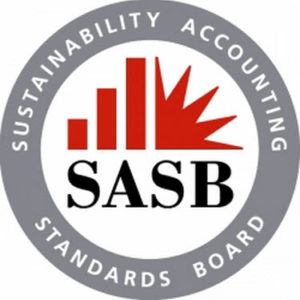“Green Think” – 2

 Before getting to the main topic of today’s post, let me say the City of Annapolis, MD, has recently done a very good deed at long last: it has banned coal tar sealant (coal tar or PAHs–polycyclic aromatic hydrocarbons) from use in the city. Never mind that other jurisdictions, such as the county surrounding Annapolis, have been faster to act.
Before getting to the main topic of today’s post, let me say the City of Annapolis, MD, has recently done a very good deed at long last: it has banned coal tar sealant (coal tar or PAHs–polycyclic aromatic hydrocarbons) from use in the city. Never mind that other jurisdictions, such as the county surrounding Annapolis, have been faster to act.
Latex-based sealants are on the shelves at building supply and many hardware stores for business and homeowner purchase and use.
Here’s the U. S. Geological Survey’s bad news on the goo: “Coal-tar-based sealcoat products typically are 20 to 35% coal tar or coal-tar pitch—these materials are known human carcinogens that contain high concentrations of PAHs and related chemicals.
“Coal-tar-based pavement sealcoat typically contains 35,000 to 200,000 mg/kg (parts per million, or ppm) PAHs, about 100 times more PAHs than in used motor oil and about 1,000 times more PAHs than in sealcoat products with an asphalt base.”
“Coal-tar sealcoat is abraded to a fine dust by car tires and snow plows, requiring reapplication every 2–5 years. The mobile high-PAH dust is blown, washed, or tracked into nearby soil, stormwater ponds, streams, lakes, and house dust. Many of the lighter-weight chemicals in coal-tar sealcoat volatilize (evaporate) into the air, primarily during the 2 weeks following application, but continuing for years after application.”
One less contaminant fouling our environment, including the air we breathe. Good riddance.
♠
Sustainability Accounting Standards Board (SASB)

In Green Think: How Profit Can Save the Planet, Rick Fedrizzi writes that 95% of the largest companies across the globe offer some kind of sustainability report as per Thompson Reuters. I’ve blogged rather extensively around Starbucks’ sustainability reporting back in January and, more recently, in March.
The mission of the non-profit Sustainability Accounting Standards Board (SASB) is to “help public corporations disclose material, decision-useful information to investors…through a rigorous process that includes evidence-based research and broad, balanced stakeholder participation.” Former New York City mayor Michael Bloomberg, a committed environmentalist, serves as Board Chairman.
SASB offers that its work is complementary to other global sustainability reporting initiatives including the Global Reporting Initiative, the International Integrated Reporting Committee and others. For the building industry, there are Environmental Product Declarations to adopt, based on ISO 14025.
Here’s how the Ford Foundation sees the rigor to social change offered by SASB-
To view SASB’s standards in particular, I registered my firm. This allowed me to view SASB metrics for a broad range of industry groups, including Healthcare, Technology & Communications and Non-Renewable Resources.
I chose the Resources Transformation category, then Containers & Packaging. Here are the topics (with “dimension”):
- Greenhouse Gas Emissions (environment)
- Air Quality (environment)
- Energy Management (environment)
- Water Management (environment)
- Waste Management (environment)
- Product Safety (social capital)
- Product Lifestyle Management (business model and innovation)
- Materials Sourcing (leadership and governance)
Let’s look at Containers & Packaging Product Lifestyle Management briefly. In describing the category, SASB offers (excepted):
“Advancements in material use and innovations in packaging design are increasingly driving market share in the industry. Designing for the end-of-life treatment of packaging is an important opportunity for manufacturers to avoid future regulation and negative reputational repercussions.
“While the life cycle impact of containers and packaging depends largely on their use and disposal, companies that can effectively mitigate environmental and health impacts during the design phase may gain competitive advantage as environmental concerns rise among the industry’s customers and the ultimate consumers.”
For the same Product Lifestyle Management category, here are the accounting metrics:
| Accounting Metric | Category | Unit | Code |
| Percentage of raw materials from (1) recycled content (2) renewable resources | Quantitative | Percentage (%) by metric tons | RT0204-10 |
| Revenue from products that are reusable, recyclable, and/or compostable | Quantitative | U.S. Dollars ($) | RT0204-11 |
| Description of strategies to reduce the environmental impact of packaging throughout its lifecycle | Discussion and Analysis | n/a | RT0204-1 |
So, as this stuff is rather dry, I’ll stop here.
But, that non-profits such as SASB help get global companies to parity in sustainability metrics is important. It challenges those CEOs satisfied by lofty-sounding platitudes a/k/a…
